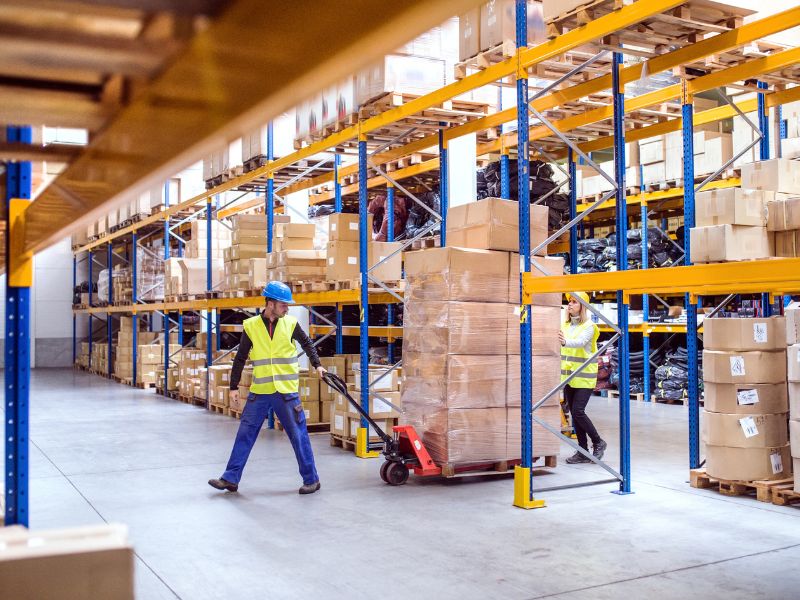Average warehouse rents in Riyadh have risen by 20% during H1, according to global real estate consultancy Knight Frank’s H1 Saudi Arabia Industrial Market Review.
The warehouse market in the Kingdom remains undersupplied, and predictably, Knight Frank says, rents remain on a sharp upward trajectory, climbing by 15% in Jeddah and 20% in Riyadh over the last 12 months. Meanwhile, vacancy rates in Riyadh and Jeddah have fallen to just 3%, highlighting the challenge for industrial occupiers and, at the same time, the opportunity for developers.
Faisal Durrani, Partner – Head of Research, MENA, says: “For developers, the industrial market is their oyster given that the most sought-after stock – high quality, internationally specified warehouses – remains in short supply. For now, the volume of planned stock is also limited. In Riyadh, for instance, the last 12 months have completed approximately 500,000 sqm. Many occupiers are now exploring build-to-suit models – notably the e-commerce and FMCG sectors.”
According to Knight Frank, average rents in Riyadh stand at SAR 190 psm, with Logistics Park (SAR 280 psm) emerging as the city’s most expensive warehousing district. In Jeddah, average lease rates stand at SAR 205 psm. Elsewhere, the Dammam Metropolitan Area (DMA) has experienced an average rise of 14% in warehouse rents, taking them to an average of SAR 230 psm.
The e-commerce industry, in particular, is driving the need for distribution centres, according to Knight Frank and warehouses and some developers are already responding. MODON, for instance, has signed a deal to build 14 high-tech warehouses in Jeddah, expected to be tenanted by global e-commerce companies.
The pressing demand for high-quality warehouses has pushed companies to adopt alternative solutions like built-to-suit models, especially businesses in sectors like e-commerce and FMCG.
Harmen De Jong, Partner – Head of Strategy & Consulting, MENA, addresses this trend: “The Kingdom is amid an exciting surge in warehousing demand. This upswing can be attributed to factors like the thriving e-commerce sector and the realisation of ambitious mega projects in the region. Furthermore, high-quality warehouses are improving, with many adopting cutting-edge technologies like automation, robotics and advanced inventory management software, creating a wider quality gap between Grade A and Grade B warehouses”.
Knight Frank highlights that one of the most significant real estate opportunities in the Kingdom currently revolves around the industrial and logistics centre. The Kingdom’s e-commerce sector has been supercharged in the wake of the pandemic, as has been the case elsewhere. The seemingly permanent shift in attitudes towards online shopping is particularly notable amongst Generation Z – those below 25. Knight Frank points to its 2023 Saudi Report, which found that this group prefers online shopping more than any other age bracket.
Durrani continued: “Demand for storage facilities, last-mile logistics facilities and cloud kitchens has soared, with a particular need for smaller, centrally located warehouses to cater to these requirements”.
Looking forward, Knight Frank says The National Industrial Development and Logistics Program, launched in 2019, has channelled approximately SAR 378 billion into projects across Saudi Arabia, but mainly focusing on the energy, mining, industry, and logistics sectors. In parallel, The National Industrial Strategy aims to drive the value of industrial exports to SAR 557 billion through a target of 36,000 factories by 2035.
Additionally, The Global Supply Chain Resilience Initiative (GSCRI) launched in Q4 2022, which aims to position Saudi Arabia as a pivotal link in global supply chains, is expected to attract SAR 40 billion in investments within two years.
De Jong concluded: “The government’s commitment to fostering a world-class industrial and logistics market in the Kingdom is clear. The plan to construct 59 logistics centres by 2030, covering over 100 million sqm, for instance, will help further to support the development of the rapidly expanding e-commerce”.




